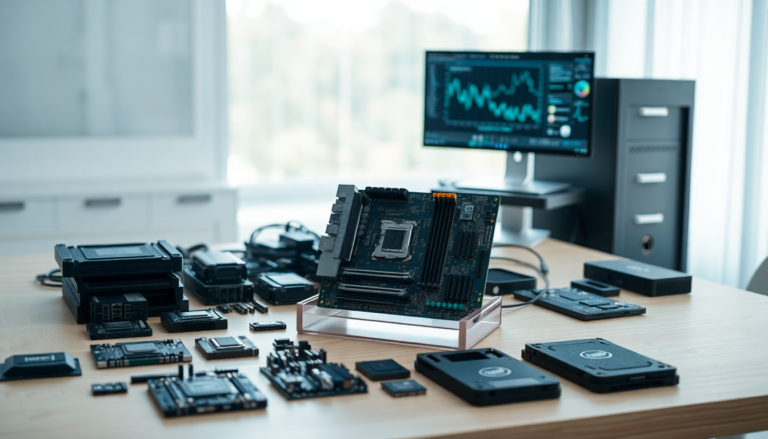Argomenti trattati
As we set our sights on 2025, all eyes in the tech community are on Intel’s upcoming Arrow Lake-S refresh. Recent leaks point to a launch in the latter half of the year, promising some modest tweaks based on existing architecture while leveraging the 20A manufacturing node. But, with no major AI upgrades in sight, one can’t help but wonder: will this be enough to keep pace with fierce competitors like AMD and Apple?
Market Context and Historical Background
Intel has been a foundational player in the semiconductor industry for decades. However, recent years have seen its market position slip gradually. The Arrow Lake refresh isn’t just another product update; it represents a pivotal moment for Intel to reclaim its standing in the desktop CPU arena. After last year’s Lunar Lake introduced the upgraded NPU 4, which set a new benchmark for AI performance, expectations for Arrow Lake were sky-high. Yet, the latest whispers suggest that Intel plans to stick with the older NPU 3, which could limit its effectiveness in AI-driven applications.
To put it in perspective, the NPU 3, which first appeared with Meteor Lake, caps out at 11.5 TOPS—far below the 40 TOPS benchmark needed for advanced functionalities like Microsoft Copilot+. This shortfall raises a significant question: can Intel truly compete in an increasingly AI-focused landscape where rivals are advancing rapidly?
Analysis of the Arrow Lake Refresh Features
Despite the letdown surrounding the NPU, there are still some promising updates on the horizon with the Arrow Lake refresh. A slight bump in clock speeds is anticipated, which could provide a minor performance boost. But will this be enough to entice users seeking substantial upgrades? It appears Intel is mirroring AMD’s recent strategy, leaning into small, incremental improvements rather than groundbreaking innovations.
In today’s unforgiving market, many consumers and investors are starting to explore alternatives that promise better performance and value. With AMD and Apple leading the charge in AI and high-performance computing, Intel’s efforts with the Arrow Lake refresh are under scrutiny. The question remains: can Intel not only catch up but also redefine its approach to stay relevant?
Future Outlook and Strategic Recommendations
Looking ahead, Intel has Panther Lake and Nova Lake on the radar, both of which are expected to utilize the much-anticipated 18A process. This could be a golden opportunity for Intel to claw back some of its lost ground in the semiconductor space. However, the success of these upcoming launches will hinge on delivering meaningful advancements that resonate with both consumers and investors.
While the Arrow Lake refresh may seem a bit lackluster, it signals that Intel is still committed to innovation. For investors and consumers alike, we may be at a crucial crossroads where evaluating the long-term viability of Intel’s strategies is essential. Staying informed about market trends and competitors will be key as the tech landscape continues to evolve.
In conclusion, while the Arrow Lake refresh might not tick all the boxes, it serves as a reminder of just how competitive the tech industry can be. More competition ultimately benefits consumers, and as Intel navigates these hurdles, the spotlight will be on how effectively it can innovate and adapt.

